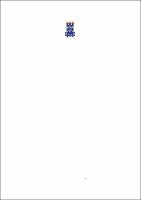| Compartilhamento |


|
Use este identificador para citar ou linkar para este item:
http://tede2.uefs.br:8080/handle/tede/1566| Tipo do documento: | Dissertação |
| Título: | Quando o petróleo empobrece |
| Autor: | Costa, Mahysa Ferreira  |
| Primeiro orientador: | Oliveira, Eddy José Francisco de |
| Primeiro coorientador: | Jesus, Taíse Bomfim de |
| Resumo: | O presente estudo visou acessar e investigar a diversidade microbiana autóctone presente no solo do manguezal com o intuito de servir como estudo referencial para trabalhos posteriores, visto que até o atual momento não foi relatado na literatura análises da diversidade genética microbiana dos sedimentos de manguezal do Rio Santarém, área de Floresta Atlântica, do Ecopolo III da APA do Pratigi. Portanto, a partir da realização do levantamento da diversidade microbiana autóctone em ambiente de manguezal, por meio da nova geração de sequenciamento massivo, da determinação dos teores de material orgânico e análises de HTPs, obtivemos resultados que demonstram maior abundância do filo Proteobacteria, seguido do filo Chloroflexi, onde a presença desses grupos de micro-organismos no sedimento podem indicar a ocorrência de contaminação por hidrocarboneto, seja ela recente ou histórica. A área do estudo em questão recebe influência do estuário da Baía de Camamu e sua localização geográfica chama a atenção sobre sua vulnerabilidade para a ocorrência de impactos provocados pelo derramamento de hidrocarbonetos do petróleo, além de ser uma Área de Proteção Ambiental (APA). Sendo assim, o presente estudo também avaliou a estrutura e diversidade de comunidade microbiana autóctone exposta ao óleo da bacia do Recôncavo, por meio da amplificação da região V4 do gene 16S rRNA utilizando a plataforma NGS Illumina, através de um experimento de perturbação criado em laboratório, onde seria analisado o efeito dessa variável sob os grupos microbianos pelo período de 30 dias. A partir dos resultados gerados, notou-se o crescimento expressivo do grupo Proteobacteria, podendo indicar a presença de grupos que apresentem função metabólica para biorremediação, além do experimento em laboratório demonstrar o empobrecimento de células bacterianas após 30 dias do contato do petróleo sob a comunidade microbiana. Diante do que foi observado através desse estudo, a estrutura e a diversidade da comunidade microbiana autóctone do sedimento de manguezal do rio Santarém são afetadas negativamente com a ocorrência do derramamento de petróleo. |
| Abstract: | The present study aimed to access and investigate the native microbial diversity present in the mangrove soil in order to serve as a reference study for further work, so far, no analysis of the microbial genetic diversity of the mangrove sediments of the rio Santarém, Floresta Atlântica, of the Ecopolo III - APA do Partigi has been reported in the literature. Therefore, from the survey of the native microbial diversity in a mangrove environment, through the new generation of massive sequencing, the determination of the organic material contents and the analysis of HTPs, we obtained results that demonstrate a greater abundance of the Proteobacteria phylum, followed by the Chloroflexi phylum, where the presence of these groups of microorganisms in the sediment may indicate the occurrence of recent or historical hydrocarbon contamination. The study area in question is influenced by the Camamu Basin estuary and its geographical location draws attention to its vulnerability to the impacts of oil spills, in addition to being an Environmental Protection Area (APA). Thus, the present study also evaluated the structure and diversity of autochthonous microbial community exposed to oil from the Recôncavo basin by amplifying the V4 region of the 16S rRNA gene using the NGS Illumina platform through a laboratory disturbance experiment, where the effect of this variable on microbial groups would be analyzed for a period of 30 days. From the results generated, we noticed the significant growth of the Proteobacteria group, which may indicate the presence of groups that have metabolic function for bioremediation, besides the laboratory experiment demonstrating the depletion of bacterial cells after 30 days of oil contact under the community microbial. Given what was observed through this study, the structure and diversity of the native microbial community of the Santarém river mangrove sediment are negatively affected by the occurrence of the oil spill. |
| Palavras-chave: | Diversidade microbiana usando gene 16S rRNA NGS Illumina APA do Pratigi Hidrocarboneto de petróleo Microbial diversity using 16S rRNA gene NGS Illumina APA do Pratigi Petroleum hydrocarbon |
| Área(s) do CNPq: | CIENCIAS BIOLOGICAS::ECOLOGIA |
| Idioma: | por |
| País: | Brasil |
| Instituição: | Universidade Estadual de Feira de Santana |
| Sigla da instituição: | UEFS |
| Departamento: | DEPARTAMENTO DE TECNOLOGIA |
| Programa: | Programa de Pós-Graduação em Ecologia e Evolução |
| Citação: | COSTA, Mahysa Ferreira. Quando o petróleo empobrece. 2019. 103 f. Dissertação (Mestrado) - Programa de Pós-Graduação em Ecologia e Evolução, Universidade Estadual de Feira de Santana, Feira de Santana, 2019. |
| Tipo de acesso: | Acesso Aberto |
| URI: | http://tede2.uefs.br:8080/handle/tede/1566 |
| Data de defesa: | 27-Set-2019 |
| Aparece nas coleções: | Coleção UEFS Coleção UEFS |
Arquivos associados a este item:
| Arquivo | Descrição | Tamanho | Formato | |
|---|---|---|---|---|
| DISSERTAÇÃO - Mahysa Ferreira Costa.pdf | DISSERTAÇÃO - Mahysa Ferreira Costa | 2,5 MB | Adobe PDF |  Baixar/Abrir Pré-Visualizar |
Os itens no repositório estão protegidos por copyright, com todos os direitos reservados, salvo quando é indicado o contrário.




